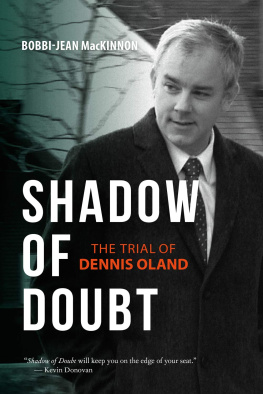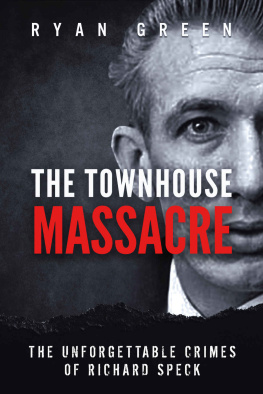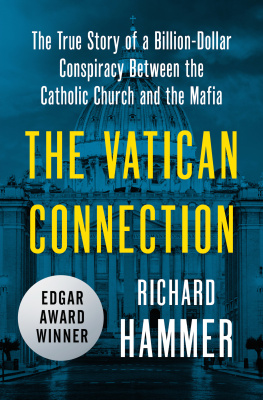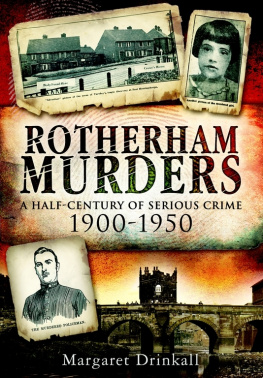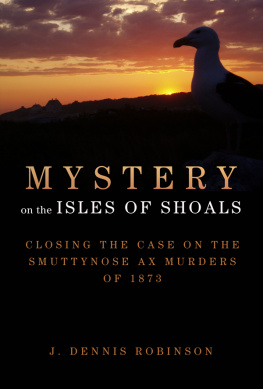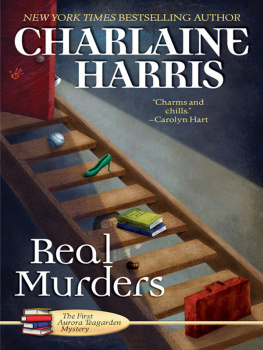MORNING AFTER
The alarm rang at five-forty A.M . in the bedroom of Judy Dykton; she was determined to get in some final licks for the neurology exam. She switched off the fan that had been working overtime against the summer heat and heard a noise that sounded like the whimpering of an animal, but paid no attention.
She walked to the basement of the town house, took some clothes that had been drying overnight, and returned upstairs. Again she heard a sound, and this time it was more distinct, like a little child crying or calling out. She opened a blind and looked out and saw a woman standing across the street, looking up at 2319, toward the crying voice. Opening the window, Judy could now clearly hear Coras cry:
Oh, my God, they are all dead!
Cover photos of the nurses are (top, from left) Mary Ann Jordan, Nina Schmale, Patricia Matusek, Valentina Pasion, and (bottom, from left) Gloria Jean Davy, Suzanne Farris, Merlita Gargullo, and Pamela Wilkening.
Fast-paced detective work and high drama in the courtroom combine to make The Crime of the Century a first-rate thriller.
James R. Thompson, governor of Illinois 19771991
Copyright 1993, 2016 by Dennis L. Breo and William J. Martin
First Skyhorse Publishing edition 2016.
All rights reserved. No part of this book may be reproduced in any manner without the express written consent of the publisher, except in the case of brief excerpts in critical reviews or articles. All inquiries should be addressed to Skyhorse Publishing, 307 West 36th Street, 11th Floor, New York, NY 10018.
Skyhorse Publishing books may be purchased in bulk at special discounts for sales promotion, corporate gifts, fund-raising, or educational purposes. Special editions can also be created to specifications. For details, contact the Special Sales Department, Skyhorse Publishing, 307 West 36th Street, 11th Floor, New York, NY 10018 or .
Skyhorse and Skyhorse Publishing are registered trademarks of Skyhorse Publishing, Inc., a Delaware corporation.
Visit our website at www.skyhorsepublishing.com.
10 9 8 7 6 5 4 3 2 1
Library of Congress Cataloging-in-Publication Data is available on file.
Cover design by Rain Saukas
Print ISBN: 978-1-5107-0886-0
Ebook ISBN: 978-1-5107-0887-7
Printed in the United States of America
For Julie
Dennis L. Breo
For Dan Ward, John Stamos, and Lou Garippo for trusting me with the prosecution.
William J. Martin
CONTENTS
God, please instill in the hearts of the people the understanding of the meaning of this tragedy. I plead for a purpose, a worth in so disastrous a loss. Why this death? Its reason I do not know. But in the years to come it will show. I trust in this.
A poem written by Gloria Jean Davy in 1963 after the assassination of President John F. Kennedy and read at her own funeral in July 1966
INTRODUCTION
A SCREAM OF TERROR
The first alarm clock went off at five A.M . Corazon Amurao had been huddled under a bunk bed for two hours. Now she began to untie herself, working her hands back and forth to loosen the double knots of the bedsheet that bound her. Then she untied her ankles. Another alarm sounded. It was five-thirty.
Crawling slowly on her stomach, she emerged from her hiding place and with great effort moved under another bunk bed, from where she could peek out the open door. Nothing moved in the hallway. She stood up and began to walk to her own bedroom. She saw the body of one of her roommates lying on the bathroom floor. As she walked across her own bedroom, she stepped over the bodies of three more, covered with blood. She closed her door, fearing the killer might still be in the house.
She climbed onto her top bunk, opened the window, and screamed almost continuously for five minutes. There was no reply. Dressed in pajama shorts and top, she crawled out the window and jumped down to a ledge of the town house facing 100th Street on the far southeast side of Chicago. She stood there screaming for twenty more minutes before anyone came, a scream that shook terror into the very heart of Chicago:
They are all dead! They are all dead! My friends are all dead. Oh, God, Im the only one alive!
It was July 14, 1966, and Chicago awoke on that hot and sticky morning to reports that eight young nurses had been brutally stabbed, strangled, and sexually assaulted. The killings took place as the victims were settling in for the evening in the safety of their own beds. This murder of innocents shocked the conscience of the nation. It seemed that a monster was on the loose, that a crazed killer who walked on ten-foot stilts bestrode a terrified city. Doors were locked, strangers were scrutinized, parents checked on their children.
The monster, who was flesh and blood, was little more than a mile due east of the murder scene, toward the lake, in the rough Calumet Harbor area of the Southeast Side. Richard Franklin Speck, twenty-four, a heavily pockmarked, tattooed drifter from Dallas, was sound asleep in a small upstairs room at the Shipyard Inn, a tavern-rooming house catering to seamen and steelworkers. A small black pistol was tucked under his pillow. A stale can of beer sat on his nightstand, next to a crumpled pile of dollar bills. What had started out as a twenty-five-dollar robbery had turned into a crime that will never be forgotten.
Speck had swept through the nurses town house like a summer tornado, and his savage murders had changed the landscape of crime. Within a few weeks, Charles Whitman would take a rifle to the top of a tower at Texas University and kill sixteen; within a few years, Charles Manson would mastermind the helter-skelter killings in southern California. Specks legacy to us is the banality of todays mass murders and serial killings.
This is how it all began.
PART I
THE MURDERS
CHAPTER 1
The Chicago thermometer hit 98 degrees on Sunday, July 10, 1966. It was the eleventh day in the past two weeks that the heat had been 90 degrees or higher, and the city was wilting from the oppressive stickiness.
In July 1966, the median annual salary in Chicago was $8,000. Truman Capotes best-selling story of the brutal murder of a Kansas family in their quiet farmhouse, In Cold Blood, could be bought for $5.95in hardcover. The sporty car of the hour was the gas-guzzling Pontiac GTO designed by John DeLorean and sold for $3,000. The big stories on Sunday were the widening war in Vietnam and the growing race rift in the United States. American soldiers chased Vietcong units into Cambodia and reportedly killed 238 elite enemy troops. The Reverend Martin Luther King pinned a list of fourteen demands for racial equality on the City Hall door of Chicago mayor Richard J. Daley. The action followed a freedom rally that attracted a crowd of thirty thousand to Chicagos Soldier Field. King warned that there would be many more marches this summer, and that Well fill up the jails, if thats what it takes to get black people out of the slums.
Meanwhile, Richard Speck was spending a quiet Sunday with his brother-in-law, Eugene Thornton, and his older sister, Martha Speck Thornton. Gene Thornton was a railroad switchman who worked nights and who had once served in the U.S. Navy. Specks sister Martha was a registered nurse who had worked in pediatrics before her marriage. The Thorntons had two teenage daughters and lived on the northwest side of Chicago in an apartment described by neighbors as disgustingly neat. The Thornton home was a second-floor apartment at 3966 North Avondale, in a working-class neighborhood just west of the Kennedy Expressway and not far from Wrigley Field, home of the Chicago Cubs. The apartment was decorated with expensive furniture and Martha Thorntons crystal collection. The small apartment was cramped, and Speck was forced to sleep on his sisters sofa.



